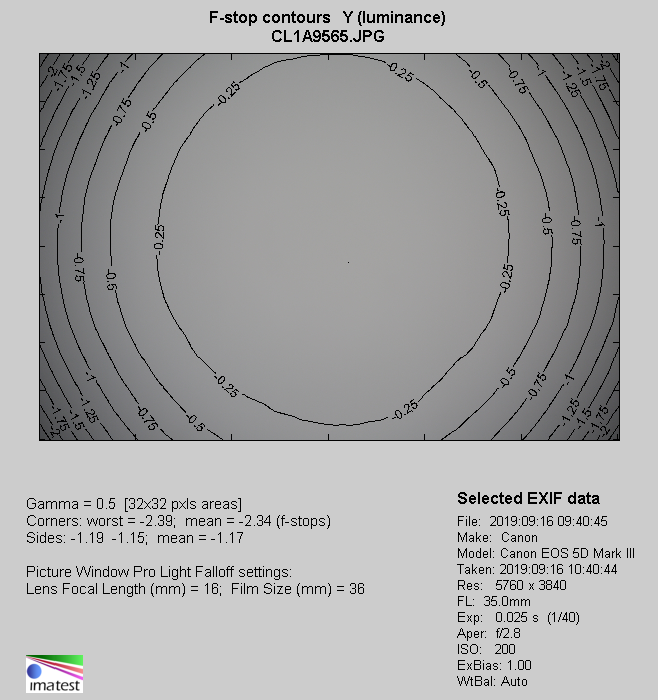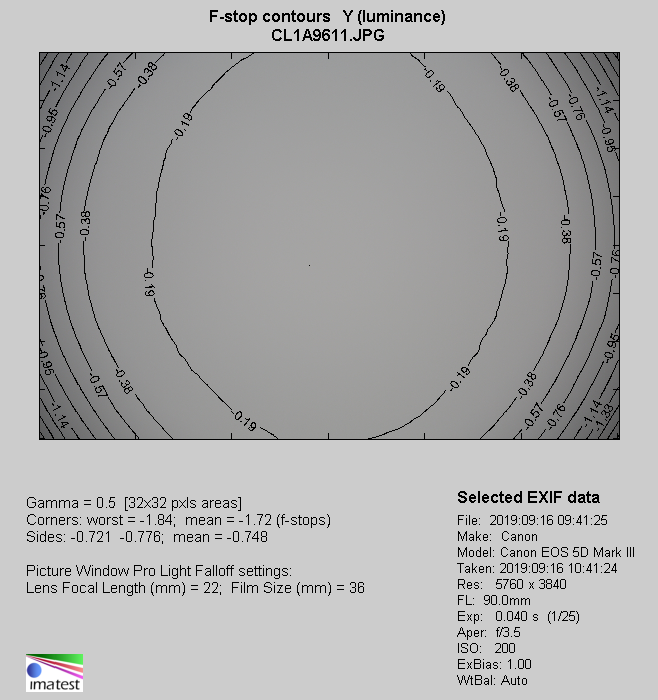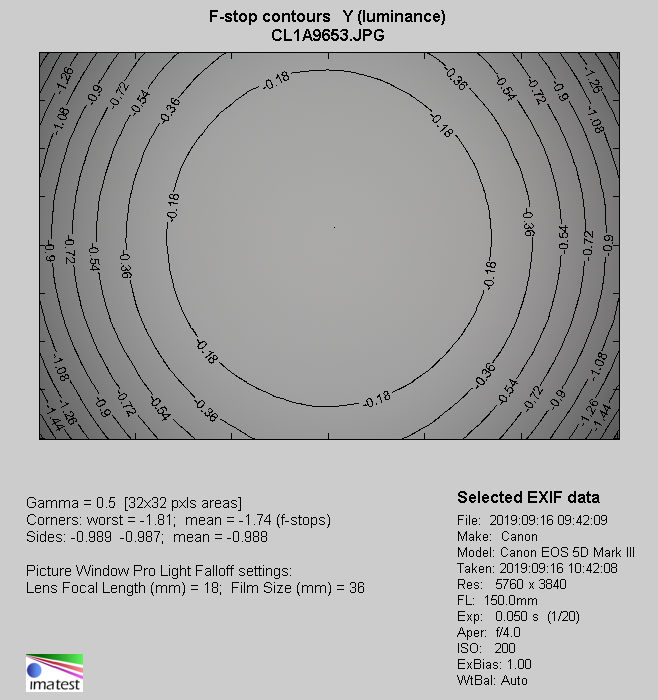Tamron 35-150 mm f/2.8-4 Di VC OSD
8. Vignetting
| Canon 50D, 35ámm, f2.8 | Canon 50D, 35ámm, f/4.0 |

|

|
| Canon 50D, 90ámm, f/3.5 | Canon 50D, 90ámm, f/4.0 |

|

|
| Canon 50D, 150ámm, f/4.0 | Canon 50D, 150ámm, f/5.6 |

|

|
In the case of the 35 mm focal length and f/2.8 aperture the brightness loss in frame corners amounts to just 15% (−0.46 EV) and then, on stopping down the aperture to f/4.0, it drops to an imperceptible level of 7% (−0.21 EV).
Please Support UsIf you enjoy our reviews and articles, and you want us to continue our work please, support our website by donating through PayPal. The funds are going to be used for paying our editorial team, renting servers, and equipping our testing studio; only that way we will be able to continue providing you interesting content for free. |
- - - - - - - - - - - - - - - - - - - - - - - - - - - - - - - - - - - - - - - - - - - - - - - -
The results in the middle of the focal range are even better: by f/3.5 vignetting reaches 12% (−0.36 EV) and it drops to 9% (−0.28 EV) after a slight stopping down of the aperture to f/4.0.
Officially the highest result you get at 150 mm and by f/4.0 - it amounts to 18% (−0.57 EV). Once again stopping down the aperture by one f stop reduces the level of light fall-off to a quite negligible value of 6% (−0.18 EV), eliminating the problem.
Let's see how the situation changes after passing to full frame – appropriate thumbnails can be found below.
| Canon 5D III, 35ámm, f2.8 | Canon 5D III, 35ámm, f/4.0 |

|

|
| Canon 5D III, 90ámm, f/3.5 | Canon 5D III, 90ámm, f/4.0 |

|

|
| Canon 5D III, 150ámm, f/4.0 | Canon 5D III, 150ámm, f/5.6 |

|

|
The results in this case are distinctly worse than the values we saw on the smaller sensor. At the combination of 35 mm focal length and f/2.8 aperture you have to take into account as much as 55% (−2.32 EV) of brightness loss in the frame corners. It's a lot, especially that you deal here with wide angles of view.
Stopping down the aperture helps with curbing the vignetting but not to an extent we would expect. By f/4.0 you still have to deal with a level of 32% (−1.12 EV) of brightness loss, and by f/5.6 you see a value of 18% (−0.59 EV). By the f/8.0 vignetting still amounts to 15% (−0.47 EV) and further stopping down doesn't have any measureable influence any longer.
In the middle of the focal range the situation is a bit better. By f/3.5 the aberration, examined here, reaches as much as 46% (−1.77 EV); on stopping down to f/4.0 it drops to 37% (−1.34 EV). Results we obtained by f/5.6, f/8.0, and f/11.0 are, respectively: 20% (−0.63 EV), 12% (−0.38 EV), and 8% (−0.25 EV).
Very similar results can be observed at 150 mm where, at the maximum relative aperture, the vignetting is 45% (−1.74 EV); then it drops to 22% (−0.72 EV) on stopping down the aperture to f/5.6. Problems cease to be noticeable by f/8.0 and f/11.0, where we got the following results: 15% (−0.48 EV), and 9% (−0.28 EV).
| Canon 5D Mk III, 35ámm, f/2.8 |
 |
| Canon 5D Mk III, 90ámm, f/3.5 |
 |
| Canon 5D Mk III, 150ámm, f/4.0 |
 |






